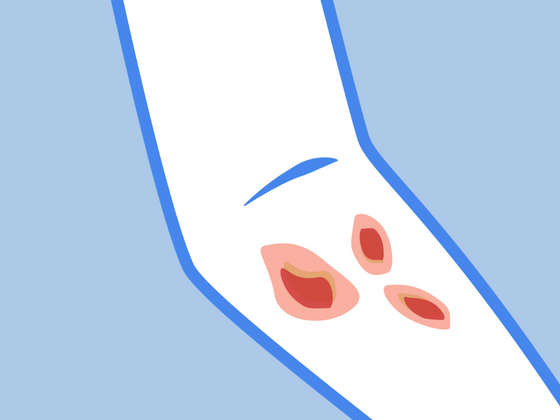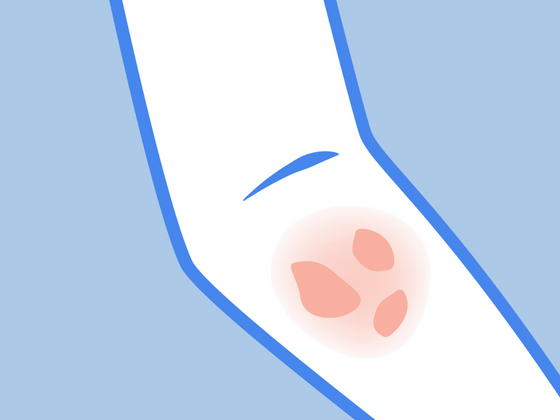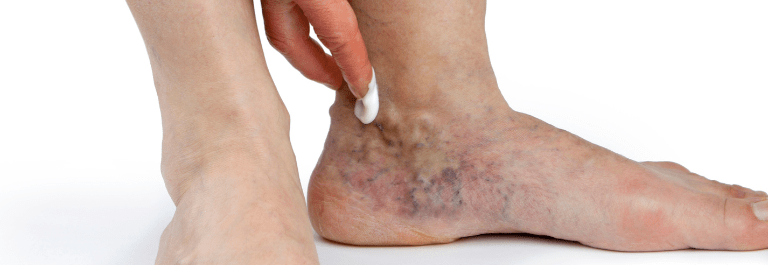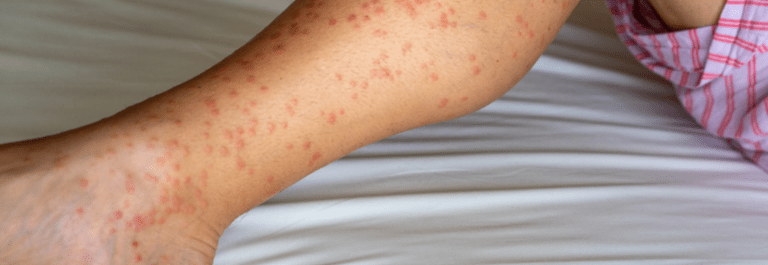What’s the difference between tinea versicolor and eczema? While both are skin conditions that can affect the color of the skin, they are very different conditions.
Eczema is a chronic condition brought out by a damaged skin barrier that has trouble retaining moisture.
On the other hand, tinea versicolor is a fungal skin infection. So, can a fungal infection look like eczema? Read on to find out!
Please keep in mind that although these tips and information have worked for several sufferers, we are in no way medical professionals. If you’re experiencing severe symptoms or have a topical infection, it is always best to seek medical advice immediately.
Understanding Eczema
Eczema is a chronic skin condition characterized by itchiness, irritation, and inflammation. If you have eczema, you’ll notice your skin is red, extremely dry, and perhaps even tender to the touch. In some cases, you may see a burning or stinging sensation. In addition, incessant scratching can cause the skin to crack or bleed, allowing bacteria to enter the skin barrier more easily, paving the way for infection.
Although research isn’t sure of the exact cause of eczema, it’s linked to genetics and environmental factors. Some common eczema triggers include pollen, sweat, stress, fabric like nylon and spandex, certain foods, pet fur, and harsh chemicals in detergent for sensitive skin, soaps, and beauty products.
Understanding Tinea Versicolor
Tinea versicolor is a common fungal infection that causes patches of skin to change color. The fungus Malassezia is a type of yeast found on the skin's surface. This fungus lives healthy on the skin and helps the human organism function properly. However, when it grows out of control, it can affect the pigmentation of the skin.
Doctors aren’t sure what causes Malassezia to proliferate on the skin's surface, but a few factors might promote its growth. These include hot, humid weather, a weakened immune system, oily skin, excessive sweating, and hormonal changes.
What does Tinea Versicolor Look Like?
As we mentioned, tinea versicolor causes patches of skin to change color.
On pale skin, patches are usually red, pink, or pale brown, while on darker skin tones, patches tend to be paler (almost white) than the surrounding skin. These patches usually appear on the chest, upper back, upper arms, neck, or tummy.
Typically appearing flat and round, they can join other patches to form a larger area. The patches can also be itchy and scaly, similar to eczema patches.
Eczema vs. Tinea Versicolor
While tinea versicolor commonly develops on the chest, upper back, upper arms, neck, or tummy, eczema can occur anywhere on the body.
Another difference is that tinea versicolor is a fungal infection, while eczema is an auto-immune disease.
Both conditions can involve itchy, dry, and scaly skin, but these symptoms are likely more prominent with eczema-prone skin. Neither condition is contagious.
Home Remedies for Tinea Versicolor
Tea tree Oil
Tea tree oil is an excellent natural home remedy for treating tinea versicolor. Leave the oil on for 30-60 minutes before washing it off. The antifungal properties of tea tree oil will help eliminate the fungus, and its anti-inflammatory properties can help soothe any itching.
Oregano Oil
Oregano oil has been used for many years in treating skin problems like ringworm, eczema, oily skin, and rosacea because of its antifungal, antibacterial, and anti-inflammatory properties. These attributes help oregano oil fight against skin conditions like tinea versicolor.
Coconut Oil
You can apply coconut oil to the affected area 2 or 3 times a day. We recommend leaving it on for 30 minutes or overnight before washing it off. Coconut’s anti-inflammatory and antifungal properties will take care of the rest.
Natural Remedies for Your Skin
Hot Skin Soother
This itchy eczema rash treatment helps calm oozing, inflamed, red, or angry skin. Containing certified safe herbs, it does a great job treating topical bacteria, yeast, and fungus. It’s also helpful in soothing irritation in skin folds, armpits, groin area, and elbow and knee creases or any areas where sweat rashes are prone to develop.
Organic Manuka Skin Soothing Cream
Made with powerful manuka honey and manuka oil, this oil-based balm is 20 to 30 times more effective against bacteria and 5 to 10 times more effective against fungus than tea tree oil. Soft and creamy, it hydrates even the driest skin without burning or stinging.
Tallow Soap Bar with Zinc
This natural eczema soap bar is renowned for its antifungal and antibacterial properties. Hypoallergenic and gentle, it's an excellent choice for sensitive skin.

Bio: Kazandra is a contributor and content developer for The Eczema Company with a flair for creative storytelling rooted in strategy. Her comments, suggestions, and reflections are not intended to replace any medical advice. Always seek the help of a medical professional before undertaking any diet or lifestyle changes.








